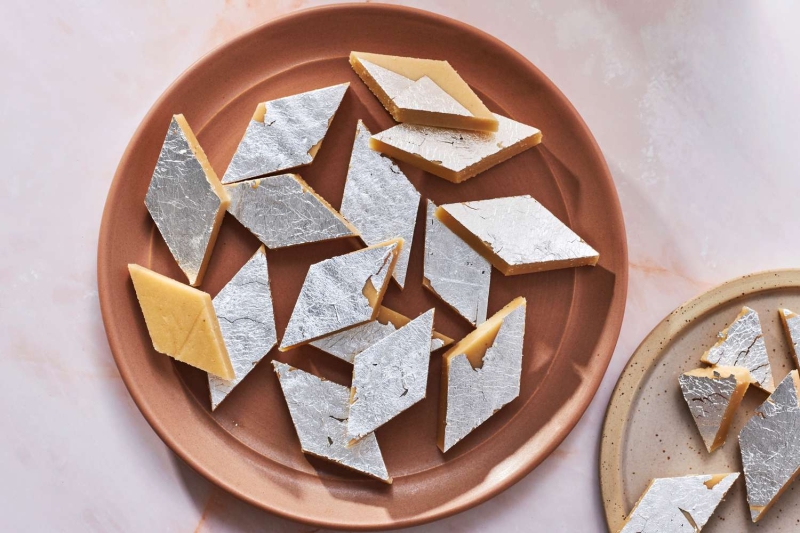A Diwali sweet made for sharing
Prep: 20 mins
Cook: 37 mins
Soaking and Resting: 26 hrs 30 mins
Total: 27 hrs 27 mins
Servings: 10 servings
Shaped like a diamond and clad in edible silver, kaju katli is one Indian sweet dish that Gen Z would describe as “lit” because it actually sparkles.
What Is Kaju Katli?
The concept of kaju katli is similar to marzipan, where cashew nut mixture is cooked with sugar and set into various shapes, in this case thin rhombus-shaped slices. The name comes from two words, “kaju” meaning cashew and “katli” which means slivers.
A Tradition of Diwali Sweets
Also known as a “mithai”, a category of Indian sweets, kaju katli is one of the three most important sweets cooked and eaten during Diwali. The other two being gujiya, crescent-shaped pastries stuffed with milk solids, and motichoor ladoo, where thousands of tiny flour pellets are fried and soaked in sugar-saffron syrup.
For Indians, the onset of Diwali is what marks boxes of kaju katli being meted out to friends and family. Every year, basements of traditional public housing societies are often taken over by sweet shops to roll out kaju katlis and various other sweets to cope with mithai demands. This means the entire area smells of sweet ghee and milk solids for months!
A Family’s Kaju Katli Tradition
My favourite kaju katli memory though is that of my maternal cousin Daksha, taking a day out of her routine each Diwali, to visit every cousin’s house and distribute circular metal tins filled with kaju katli. It’s our version of Christmas cookies.
What makes Daksha’s kaju katli different is that it isn’t coated in edible silver (frankly, I don’t like the silver), but rather strands of sweet saffron that paint the top layer of her slim katlis. This twist makes her recipe a family heirloom that we will cherish for generations to come.
What’s the Difference Between Kaju Katli and Kaju Barfi?
A barfi, whether made out of cashews, almonds, pistachios or any other ingredient, usually has milk solids (Indian name: khoya) mixed with the nut paste. Kaju katli is made using only two ingredients: soaked cashew nuts and sugar. There is no milk involved.
Tips for Making Kaju Katli
- Use broken cashews—Do not use whole cashews, broken nuts work best for this recipe.
- Don’t use cashew flour—Do not use readymade cashew nut flour. It is best to grind your own nuts.
- Use a rolling pin—Instead of pressing out the cashew “dough” with your hands, you can place it between two sheets of parchment paper and roll it out with a rolling pin.
- Checking for doneness—A way to determine when the cashew mixture has cooked long enough is to take a small spoonful, let it cool slightly, and roll it between your fingers. It should not stick to your fingers and have a dough-like consistency.
«Kaju Katli is an Indian sweet made with sugar and ground cashews. It can be coated in edible silver or eaten unadorned. If using the silver, be sure to use the liner sheets to help flip it over onto the Kaju Katli in one piece; and be gentle! The sheets are quite fragile.» —Joan Velush
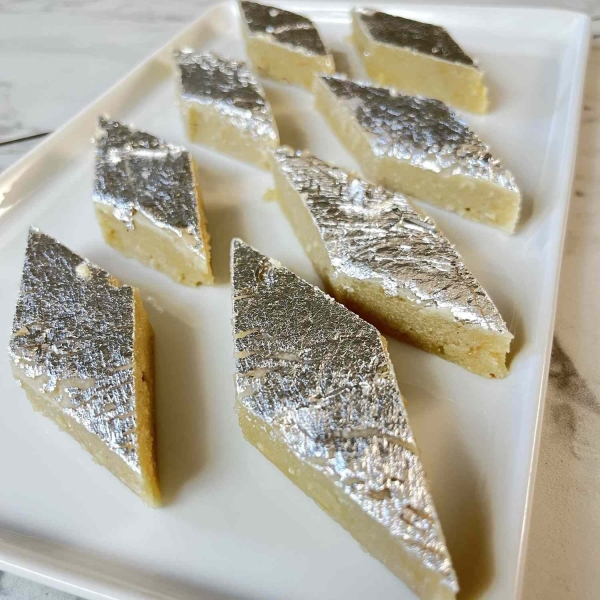
A Note From Our Recipe Tester
Ingredients
-
7 1/4 cups (1000 grams) cashew pieces
-
4 cups (800 grams) granulated sugar
-
1 sheet edible silver, optional
Steps to Make It
-
Gather the ingredients.
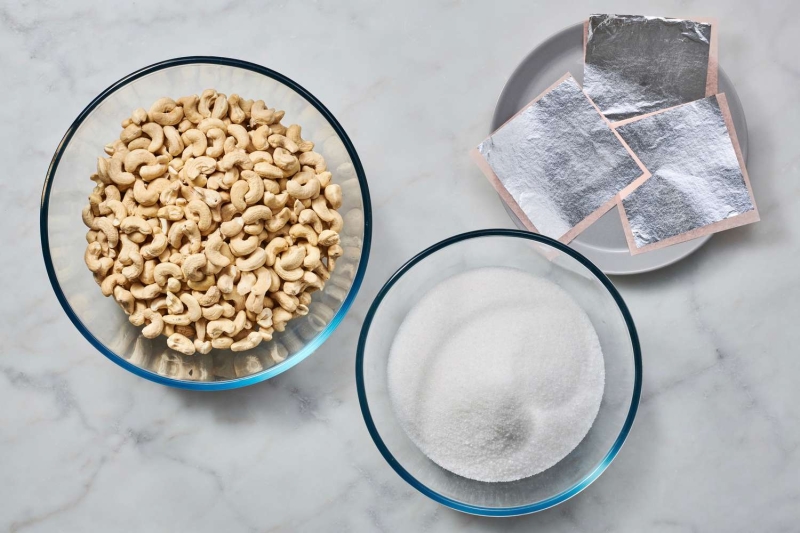
-
Soak 7 1/4 cups (1000 grams) cashew pieces in water to cover for 2 hours. This will make the nuts swell.
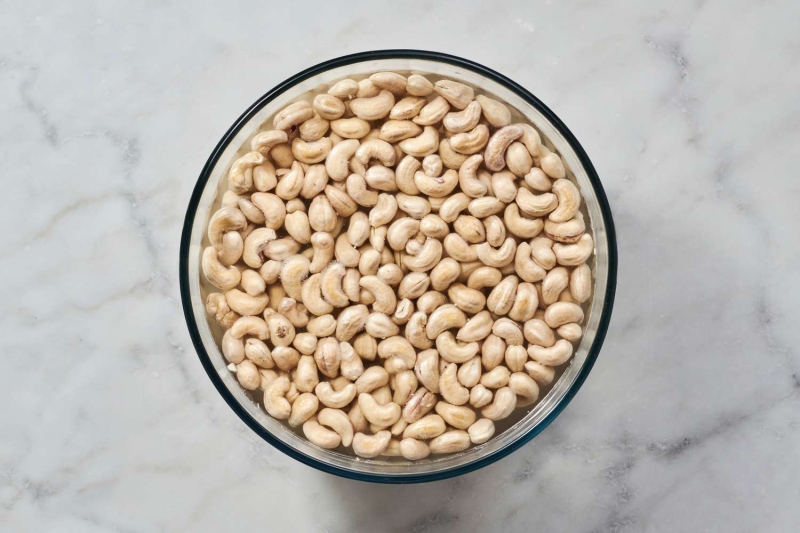
-
Drain the cashews then transfer them to a food processor or high-speed blender and blend, in batches, into a mostly smooth paste. You will need to scrape down the sides several times.
Do not add more water, as the water from the soaked cashew nuts is enough to create a spreadable, homemade, mostly smooth peanut butter-like texture. The goal is to make it minimally grainy without adding extra water.
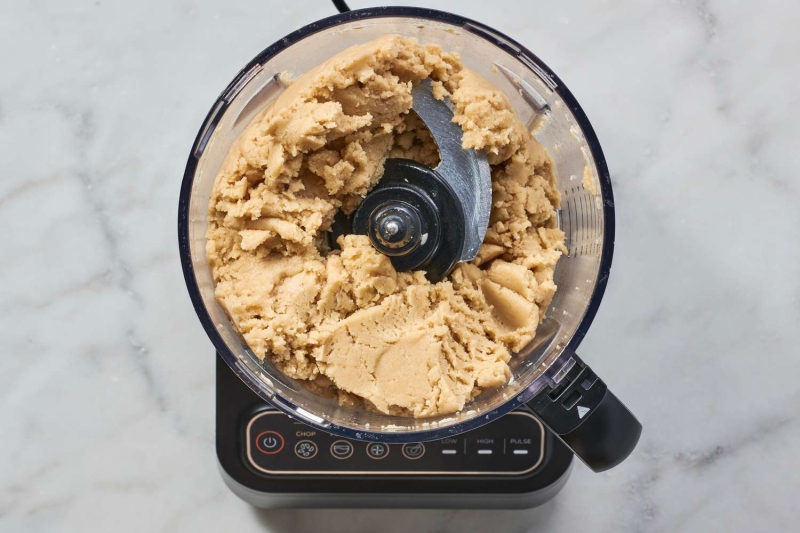
-
Transfer the cashew paste to a medium bowl, mix in 4 cups (800 grams) granulated sugar, and set aside for 30 minutes. This time should allow the sugar to completely meld into the cashew paste.
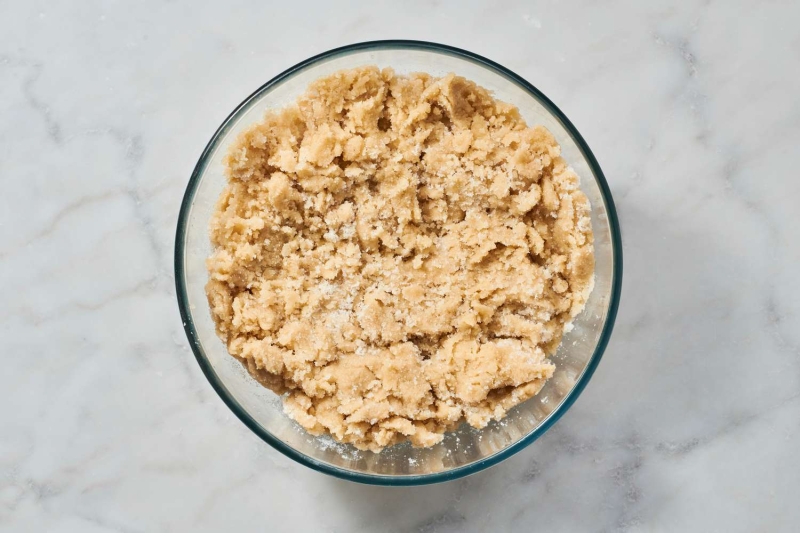
-
Transfer the cashew-sugar mixture to a heavy-duty pan. Cook the paste over low heat, stirring continuously in the same direction without scorching, until the mixture develops a dough-like consistency and a small spoonful, when cooled slightly, can be rolled between your fingers without being sticky, 30 to 35 minutes.

-
Transfer the cashew-sugar mixture to a stand mixer. Using the paddle attachment, stir it on low speed until the bottom of the mixer bowl feels warm (not hot), about 15 minutes.
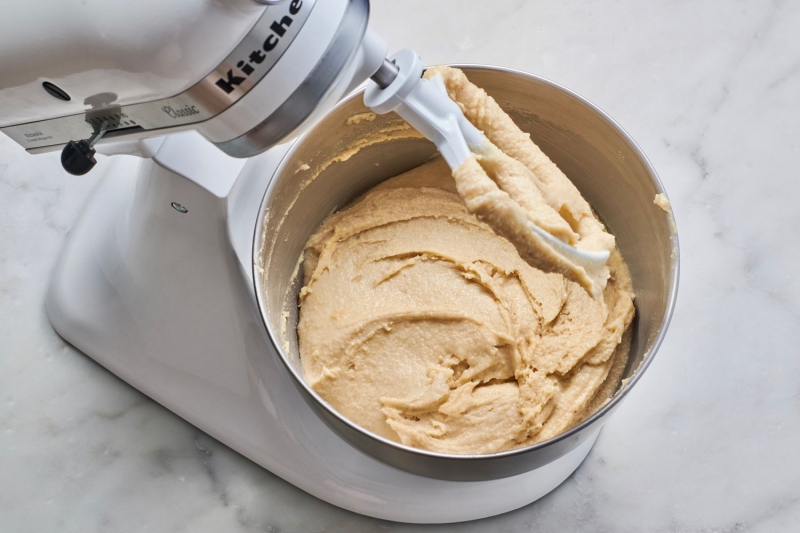
-
Gently scrape the mixture onto a parchment-lined sheet pan.

-
Spread it out evenly, pressing it down with your fingers beneath a sheet of parchment paper until it is about 1 cm (about 1/3 inch) thick on all sides. You can cover the mixture with parchment or plastic and use a rolling pin to help flatten it, if desired.
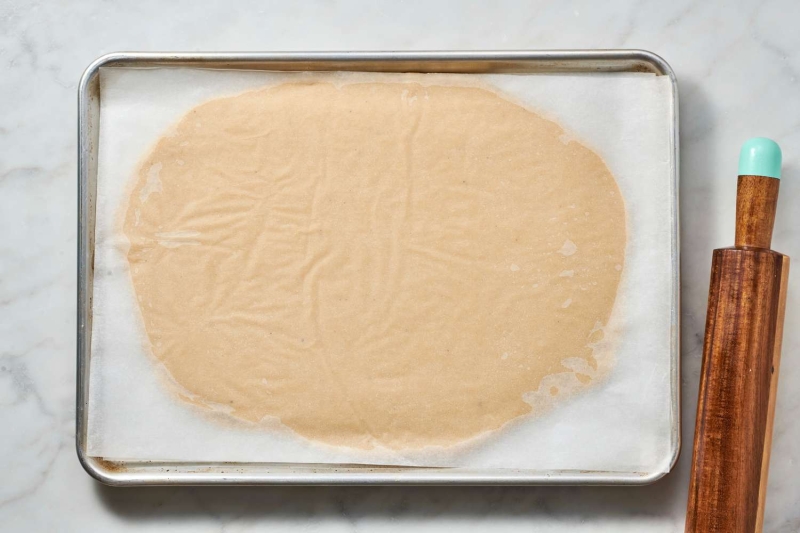
-
Carefully top the mixture with 1 sheet edible silver, if desired. Allow it to harden completely overnight before cutting into diamond shapes and serving.
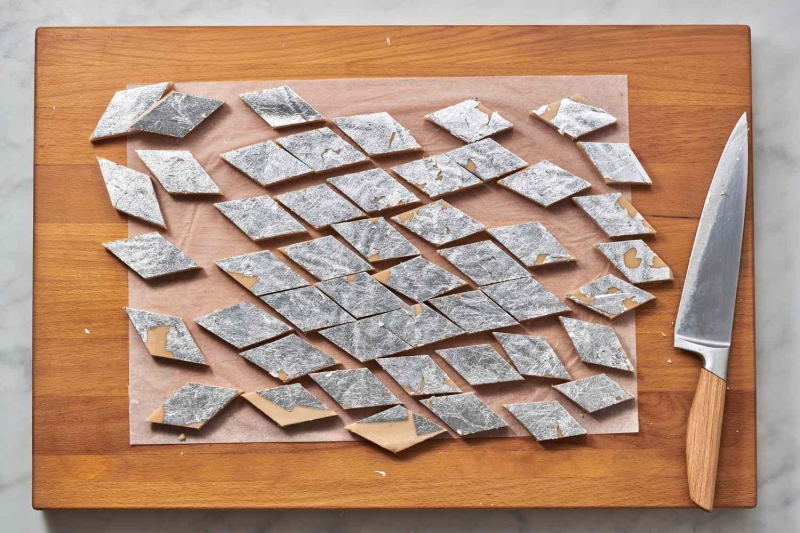
How To Store
Kaju katli stays fresh in an air-tight container in a cool, dry place for up to 5 days.
Feeling Adventurous? Try This:
- Top with saffron—You can replace edible silver with saffron strands. Scatter 8-10 strands over the warm katli mixture and press in gently so they adhere.
- Cut into different shapes—Instead of diamond shapes, you can cut the katli into triangles or any shape, though diamonds are traditional.
- Flavor the cashew mixture—Add a teaspoon of rose water or 1/2 teaspoon ground cardamom to the mixture right before transferring it to the stand mixer.
| Nutrition Facts | |
|---|---|
| Servings: 10 | |
| Amount per serving | |
| Calories | 884 |
| % Daily Value* | |
| Total Fat 46g | 59% |
| Saturated Fat 9g | 46% |
| Cholesterol 0mg | 0% |
| Sodium 641mg | 28% |
| Total Carbohydrate 113g | 41% |
| Dietary Fiber 3g | 11% |
| Total Sugars 85g | |
| Protein 15g | |
| Vitamin C 0mg | 0% |
| Calcium 46mg | 4% |
| Iron 6mg | 34% |
| Potassium 567mg | 12% |
| *The % Daily Value (DV) tells you how much a nutrient in a food serving contributes to a daily diet. 2,000 calories a day is used for general nutrition advice. | |
